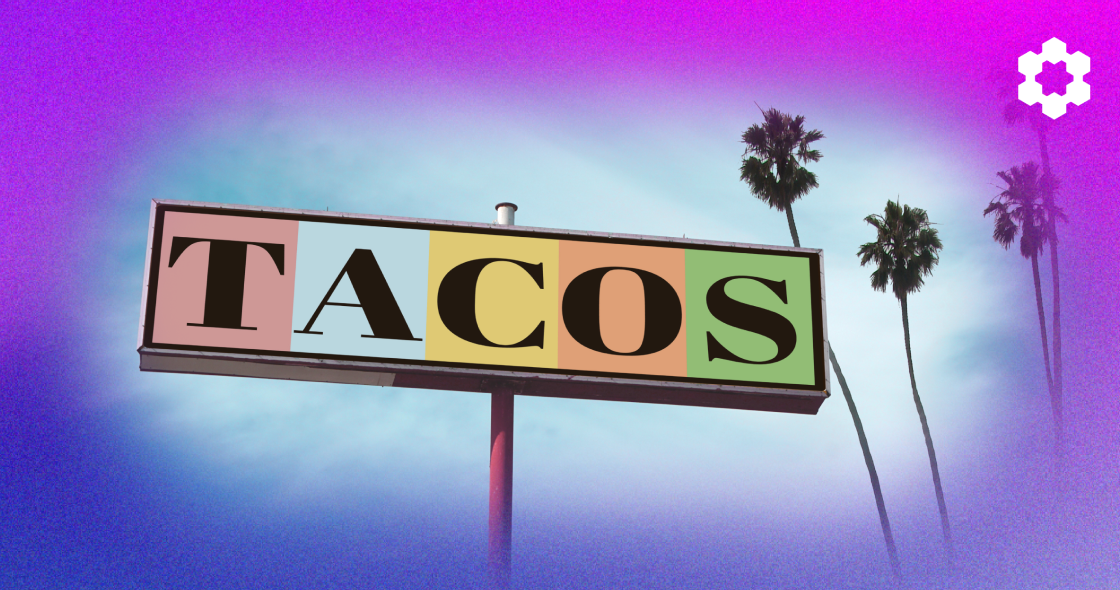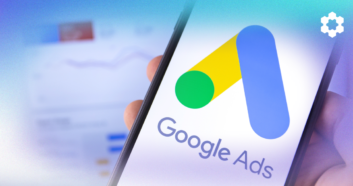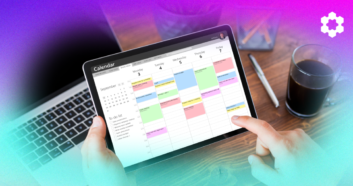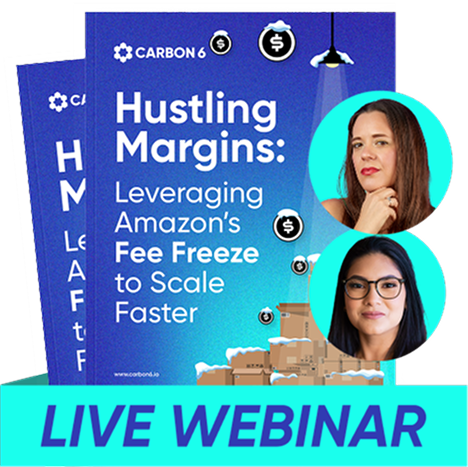Buckle up for a tight, informative run through pretty much everything you want to know about benchmarks and strategies for Advertising Cost of Sales (ACOS) and Total Advertising Cost of Sale (TACOS). We’ll cover Amazon ACOS and TACOS for:
- Amazon Sponsored Ads
- Amazon DSP
- Google Ads for Amazon
Along with key standards for each, tips for optimizing your major ad metrics, how each ad platform works together, where they complement each other, plus what you can do to reduce costs and boost sales.
Oh, and if that wasn’t enough, we’ll touch on the surprising possibility of achieving a negative Amazon ACOS. Unbelievable? It can actually be reached under certain conditions.
For details on that see the final section, aptly named The Holy Grail.
Did we mention buckling up?
Ads: The 10,000 Foot View
Amazon advertising can be grouped into three broad categories:
1. Sponsored Ads
Also called Amazon PPC (Pay Per Click), these are ads paid for by sellers to promote specific products, with results that appear on Amazon pages. They come in three main flavors:
- Sponsored Products
- Sponsored Brands
- Sponsored Display
Each offers certain benefits, with specific restrictions. All sponsored ads appear within the Amazon ecosystem where customers do their shopping.
2. Amazon DSP
A demand-side platform that programmatically buys ads to reach new and existing audiences both on Amazon and off, including third-party apps.
Until the advent of services like DSP Prime, DSP was typically reserved for the very highest-end sellers with the largest ad budgets.
3. Google Ads for Amazon
Driving traffic from the world’s largest search engine is another way to advertise your Amazon products. Paired with a solid DSP strategy, Google Ads + DSP is gaining traction as one of the most successful methods of conversions and sales.
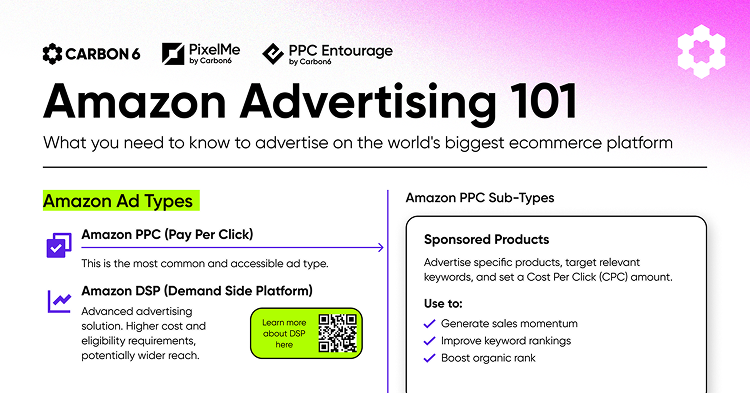
Each ad type measures results in ACOS (Advertising Cost of Sales) and TACOS (Total Advertising Cost of Sale) — metrics that matter greatly for ad spend.
Let’s take a look at each.
What is Amazon ACOS?
Advertising Cost of Sales compares the amount spent on ads to the revenue generated from those ads, giving you an accurate gauge of the profitability of your advertising campaigns. ACOS can be calculated using this formula:
- ACOS = (Ad Spend / Ad Revenue) * 100
ACOS varies across each ad type.
Sponsored Ads: ACOS for Sponsored Ads will typically be lower (better) than with DSP, as the ads are shown to users actively searching for products on Amazon.
This is also typically the most straightforward ad type to track and optimize.
Amazon DSP: Generally ACOS will be higher here, as DSP campaigns often prioritize brand awareness and focus on reaching a wider audience beyond Amazon.
Here ACOS can be more complex to measure, as campaigns may have broader goals beyond immediate sales, such as brand building or retargeting.
Google Ads for Amazon: This is where you may see the widest variation in ACOS, but it’s also where you can get some of the best results — and possibly even hit that Holy Grail of a negative ACOS (see the final section of this article below). Especially with an ad partner who knows their business.
What is Amazon TACOS?
Total Advertising Cost of Sale is a metric that helps sellers track the overall impact of what they’re spending on advertising. It shows the percentage of revenue spent on advertising versus the total sales revenue.
Calculate TACOS using this formula:
- TACOS = (Ad Spend / Total Revenue) * 100
(Note: unlike with ACOS, here we’re dividing by Total Revenue)
Though similar at a certain level, the two differ in their objectives. ACOS is focused primarily on the performance of your individual ad campaigns.
TACOS provides a broader view of your overall business performance.
In short, ACOS helps you optimize individual campaigns, whereas TACOS ensures you’re growing your business sustainably by balancing ad spend with overall sales.
What’s a Good ACOS & TACOS for Amazon Ads, DSP and Google Ads?
Benchmarks vary significantly by ad type, business size, and even category. What matters most is continuously improving your metrics through testing and optimization for your specific business.
The goal, of course, is to be savvy enough to develop strategies that work for your unique situation. Your optimal ACOS and TACOS will be influenced by factors such as:
- The growth stage of your business (new product launches vs established products)
- Your product category (electronics, furniture, etc.)
- Keyword match types (broad match, phrase match, exact match)
- Retargeting strategies
- Platform-specific placements (such as amazon-owned sites and off-amazon sites for DSP)
With the right strategies tailored to these factors, you can elevate your results in every case, regardless of industry averages.
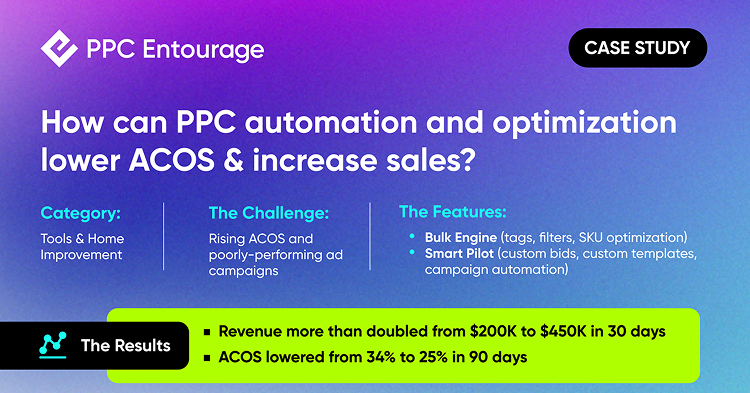
PPC Entourage by Carbon6 helped one company in the Tools & Home Improvement category hit their 6-month Amazon ACOS goal in just 90 days.
Scale your Amazon ads with PPC Entourage. Our Smart Pilot automation optimizes campaigns across all ad types in minutes instead of hours, helping you slash ACOS and boost profits without the spreadsheet hassle. Start your free trial now.
ROAS: The Mighty Metric
In this article we’re focused on ACOS and TACOS, but let’s take a moment to discuss ROAS, or Return on Advertising Spend.
ROAS tells you how much revenue you’ve generated for every dollar spent on advertising. Expressed as a ratio, the formula is:
- ROAS = (Sales / Ad Spend)
Example: if you spent $100 on ads and got $500 in sales, your ROAS would be 5.
Average ROAS for both Sponsored Ads and DSP runs between 4 and 5, with higher values achievable through aggressive strategies — typically in coordination with skilled advertising partners.
Example: DSP by Carbon6 is, on average, able to boost ROAS into the range of 8 – 14 (remember, averages are between 4 – 5), and they’re able to do it quickly — often driving dramatic results within weeks of launch.
If you’re looking to offload your own time and energy, while taking your ad game to the next level, consider working with an advertising partner to help you get there.
Let’s take a look at ways to strengthen your foundational metrics, ACOS and TACOS.
Strategies for Optimizing Amazon ACOS & TACOS Across Ad Types
Each ad type benefits from slightly different strategies.
Amazon Sponsored Ads
Focus mainly on keywords, bids, optimizations.
Keyword Targeting
- Use Amazon’s product and audience targeting to refine keywords, minimize wasted ad spend and improve TACOS.
- Do thorough keyword research to find (and use) the best keywords.
- Make use of negative keywords to filter out irrelevant traffic and improve ad relevance.
Bid Adjustments
- Optimize bids based on performance.
- Allocate ad budgets to high-performing campaigns; pause or reduce those that aren’t.
- Do A/B testing to find your best performing ad creatives.
- Use automated bid adjustments, or partner with a service that will do it for you.
Listing & Ad Optimization
- Craft compelling ad copy that closes customers on your products.
- Use high-quality images.
- Endure your product listings are optimized for conversions.
- Track key metrics like click-through rate (CTR) and conversions closely.
Amazon DSP Advertising
With DSP also see to:
Audience Targeting
- Demographics
- Interests
- Behavior
- Lifestyle
- Life Events (new parents, new home, etc.)
- Lookalike Audiences
- Device Usage
Retargeting Strategies
- Segment audiences based on interaction with your brand.
- Use dynamic ads to show relevant products customers have shown interest in.
- Target specific purchases for upsells and cross-sells.
- Set frequency caps to avoid overexposure.
- Do retargeting across multiple platforms to expand reach.
As with all things, do A/B testing to see what works best. Remember: With Amazon DSP you have their massive trove of first-party customer data which can be leveraged to great effect.A strategic DSP partner can help with direct access to better data insights, improved ad efficiency, and streamline processes for diversifying ad spend for optimal results.
Expand your reach with DSP Prime. Our expert-managed advertising solution leverages Amazon’s first-party data to connect your brand with high-intent audiences across websites, apps, and streaming platforms. Get your customized growth plan now and launch in just 10 days.
Google Ads for Amazon
In addition to Google there are other sources of off-Amazon advertising and all can lead to higher traffic. Sources like Facebook, Instagram, TikTok — even custom links — can all be leveraged for sales.
Services like PixelMe from Carbon6 specialize in maximizing this traffic.
Optimization strategies are similar as for Amazon ads, and include:
- Keyword research and optimization
- Ad copy optimization
- Optimization of your Amazon landing pages
- Making use of effective targeting options
- Oversight of bidding results and metrics
PixelMe by Carbon6 helped one Health & Household brand bring their Best Seller Rank down from #101 to #4, while dropping their Amazon TACOS from 14.75% to 6.47%.
A comprehensive strategy running across all ad types, each in concert with the other, would be the most effective possible advertising solution — and the one guaranteed to produce the most successful results.
Drive high-converting external traffic to your Amazon listings with PixelMe, our AI-powered external traffic solution. Boost your organic rank, minimize ACOS, and unlock Amazon’s Brand Referral Bonus program with ease. Get your free ASIN audit now.
Other Tips
Amazon ACOS vs. TACOS: When to Prioritize ACOS Over TACOS
There are times you might want to focus on ACOS.
New Product Launches: You may find it beneficial to prioritize ACOS in order to gain visibility and gather early sales data.
High Competition: In a particularly competitive environment you may choose to focus on ACOS to help manage costs while still driving sales.
Seasonal Peaks: These can be instances where putting ACOS first helps take advantage of increased demand.
In all cases, balance ad spend efficiency with long-term organic growth. While you may at times want to engage in short-term tactics, as much as possible fit your overall ad strategies into your larger goals, and align them across each ad platform.
PixelMe Case Study Spotlight:
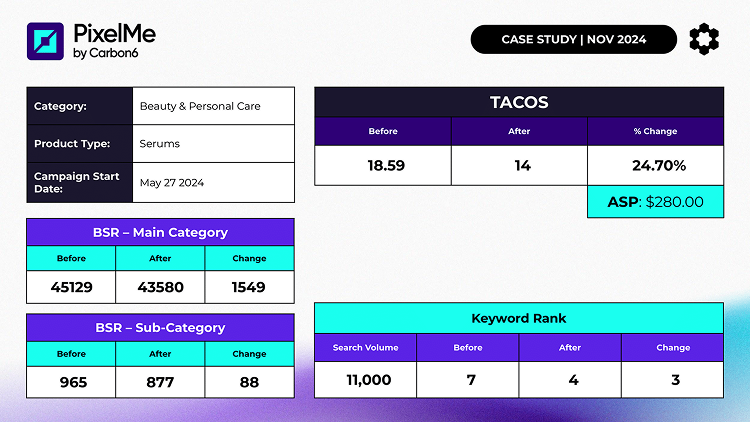
PixelMe by Carbon6 helped one Beauty & Personal Care brand bring their Amazon TACOS from 18.59% and 14%, and improving keyword rank from #7 to #4.
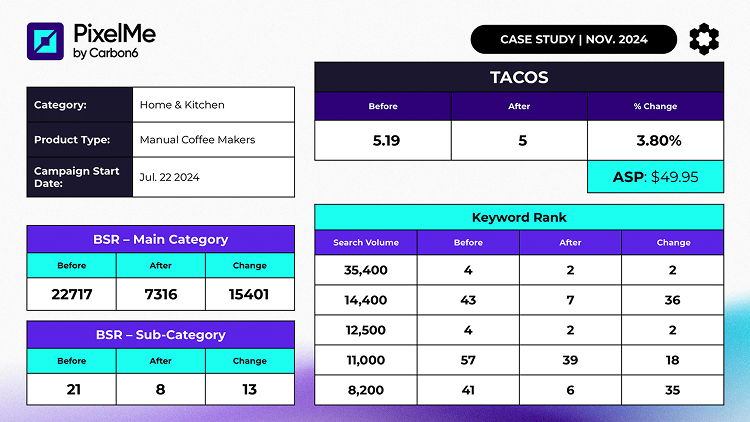
PixelMe by Carbon6 helped one Home & Kitchen brand bring their BSR sub-category down from #21 to #8, while dropping their Amazon TACOS from 5.19% to 5%, and significantly improving keyword ranks.
Diagnosing Performance Spikes in ACOS & TACOS
Fluctuations in ACOS and TACOS can occur for a variety of reasons. Key things to check/be aware of:
- Seasonal factors
- Activity of competitors
- Ad budget changes
- Variations in product demand
- Updates to Amazon algorithms
- Changes to keyword relevance
Maintain/regain control by:
- Regularly reviewing your ACOS and TACOS metrics to identify trends
- Checking, testing, refining keywords
- Increasing spend on high-performers, reducing spend on underperformers
- Monitoring competitors
- Making seasonal adjustments
- Optimizing listings
Control of your advertising results comes down to oversight and understanding.
A Smorgasbord of Letters: BOFU, MOFU, TOFU
Advertisers think in terms of funnels.
- TOFU: Top of Funnel; the Awareness stage.
- MOFU: Middle of Funnel; the Interest and Evaluation stage.
- BOFU: Bottom of Funnel; Commitment and Sale.
Carbon6 offers resources for each stage. BOFU is what the bulk of this article is about, along with partner options available to help. In addition to that, we have resources for understanding and leveraging the TOFU and MOFU parts of the cycle.
For the MOFU stage check out our DSP White Paper and Organic Ranking White Paper, both of which share everything we know about ranking and DSP (which is a lot), along with tons of tips. Both are free.
At the TOFU step the biggest advantage you can give yourself is staying on top of the latest info and insight into the Amazon game. For that your best bet is our Amazon Seller News newsletter. With it you’re guaranteed to be in the know.
The Holy Grail of Amazon ACOS
Here it is: the unbelievable possibility of achieving a negative ACOS.
How would that even work?
Such a state can be reached by pairing high-volume, effective off-Amazon traffic with Amazon’s Brand Referral Bonus. With the right balance of traffic and the referral bonus, the cost of your advertising can be covered or even profitable.
Imagine your ads themselves as a profit center.
Often this is more easily achieved with higher priced products. For example, if you had a $100 product and could get your cost-per-click down to, say, 50 cents, and you’re getting a 10% bonus from the Amazon Brand Referral program, that means you can get up to 20 clicks and be at or below zero on your advertising cost.
$100 * 10% = $10 back from Amazon
$10 / $0.50 per click = 20 clicks
That means up to 20 clicks are paid for with each sale.
You can see how such a flywheel could spin rapidly toward greater and greater sales, even as it pushes closer and closer toward low- or no-cost advertising.
Just another example of how smart strategies — and partnering with the experts who know and implement them — can drive your Amazon business to a new range.
Your Amazon Advertising Strategy
Making full use of this trifecta of advertising (Sponsored Ads, DSP, External Traffic) is key to the most robust, successful Amazon advertising strategies.
A single-source partner can help.
Carbon6 provides expert management and proven results for each of the three major advertising types.
- Amazon Sponsored Ads = PPC Entourage by Carbon6
- Amazon DSP = DSP Prime by Carbon6
- External Traffic = PixelMe by Carbon6
Such a partnership trifecta brings a level of expertise to the whole, optimizing and overseeing Amazon PPC, DSP, and External Traffic, ensuring your ad spend drives both immediate sales and long-term organic growth.
Whether you go it alone or partner with an expert, managing by the key metrics of ACOS and TACOS will give you the oversight you need to achieve your advertising goals.
Happy selling.
